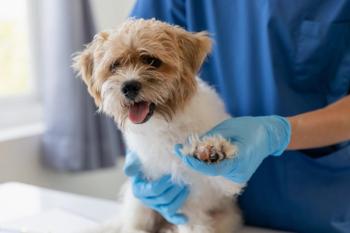
DHS firm on Kansas site for bio-defense research lab
Despite a GAO report critical of its choice, the Department of Homeland Security remains committed to the Manhattan, Kan., site it chose for a new national bio-defense research laboratory and says it won't re-open the selection process.
WASHINGTON — Despite a critical report from another agency and a fair amount of political pressure, the Department of Homeland Security (DHS) remains committed to the Manhattan, Kan., site it chose for building a new national bio-defense research laboratory and says it won't re-open the site-selection process.
As part of the 2010 government appropriations bill, Congress asked the Government Accountability Office (GAO) to conduct a separate study on DHS's recommendation to move the Level-3 laboratory at Plum Island, N.Y., to Kansas. The study was to evaluate whether it would be safe to conduct research into foot-and-mouth disease (FMD) at a mainland site for the first time, rather than on the offshore island where it's been handled for decades in an aging facility.
GAO concluded that DHS, with input from the U.S. Department of Agriculture (USDA), didn't adequately assess the bio-security and economic risks of building the new Level-4 National Agro and Bio-Defense Facility (NABF) in Midwestern farm country, near livestock operations, where a release of the FMD pathogen by a tornado, terrorist act or other means reportedly could have a much greater economic and disease impact than in offshore New York.
Such an event on Plum island could have a $31 million economic impact, compared to a $1 billion impact in Kansas, the GAO report says, citing another study.
"Given the significant limitations in DHS's analyses that we found, the conclusion that FMD work can be done as safely on the mainland as on Plum Island is not supported," the GAO report says.
DHS defends its choice
But DHS shot back, in a 30-page response in July, that the GAO study didn't respond to what Congress asked. Instead of evaluating whether FMD research "can be done safely on the mainland," the GAO instead chose to evaluate whether the research "can be done as safely on the mainland as on Plum Island."
DHS says its own environmental-impact study took into account the GAO's point that the water barrier around Plum Island would provide an extra layer of protection in the event of an accidental release of the FMD pathogen, but it called that scenario "extremely unlikely," adding that "while the study of contagious diseases anywhere is not without risk, modern bio-containment technology makes the likelihood of an accidental release of a pathogen extremely low, and ... has eliminated the need for locating animal-disease research on an island as was done decades ago."
GAO should not dismiss the fact that FMD research is being performed safely on the mainland in several other countries, DHS says in its response. And it points out that there are already five BSL-4 (highest level) facilities currently operating in the United States in populated areas (Centers for Disease Control and Prevention and Georgia State University, both in Atlanta; U.S. Army Medical Research Institute of Infectious Diseases at Ft. Detrick, Md.; University of Texas Medical Branch in Galveston; and Southwest Foundation for Biomedical Research in San Antonio, Texas).
In his own formal response to the GAO report, Bradley Buswell, DHS Under Secretary for Science and Technology, noted strong public opposition to building a BSL-4 research lab on Plum Island but strong support for Kansas and the other locations DHS considered in Texas, North Carolina, Mississippi and Georgia.
But U.S. Rep. Tim Bishop (D-N.Y.), responding to GAO's report, calls the recommendation to phase out Plum Island "essentially a rush job" and wants DHS Secretary Janet Napolitano "to revisit the decision" as well as the decision to build the Kansas facility.
"This (GAO) study underscores the validity of why Plum Island was originally chosen," Bishop says. "I'm sobered by this report. ... We still have time to correct this."
Napolitano, however, says the decision to move the lab to Kansas was properly researched and should go forward.
A group of Texas business and bioscience experts sued DHS in a federal court over the decision to locate the NABF in Kansas, but a judge dismissed the suit in July, saying it was based on hypothetical claims and thus not "ripe" for judicial review, although the suit could be re-filed later.
Kansas officials say the county in Texas where some lobbyists had wanted to bring the NABF is more tornado-prone than Kansas, and presents a hurricane risk as well. And Tom Thornton, president of the Kansas Bioscience Authority, the group that helped land the facility at the Kansas State University site, says conducting FMD research in Kansas is no different or more dangerous than conducting research in human diseases at the CDC in Atlanta.
Kansas officials expect construction of the $560 million to $650 million NABF to start in July 2010, although Congress hasn't yet appropriated any construction funds. The facility is expected to create 1,500 jobs and pump some $3.5 billion into the local economy when it opens in about 2015.
Newsletter
From exam room tips to practice management insights, get trusted veterinary news delivered straight to your inbox—subscribe to dvm360.




